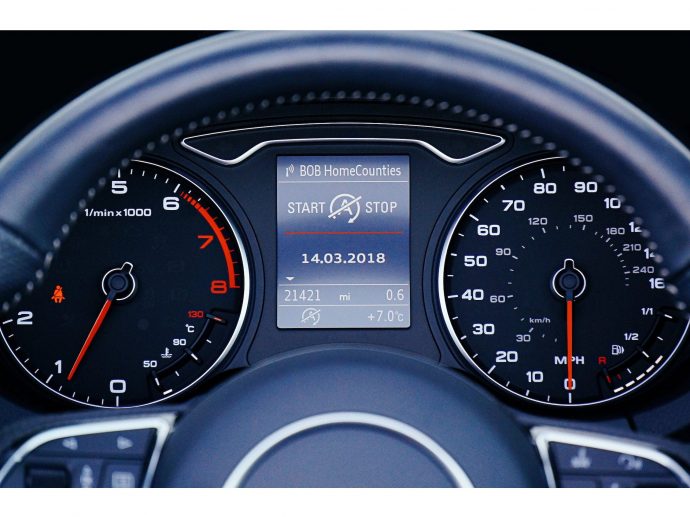Categories more
- Adventures (17)
- Arts / Collectables (15)
- Automotive (37)
- Aviation (11)
- Bath, Body, & Health (77)
- Children (6)
- Cigars / Spirits (32)
- Cuisine (16)
- Design/Architecture (22)
- Electronics (13)
- Entertainment (4)
- Event Planning (5)
- Fashion (46)
- Finance (9)
- Gifts / Misc (6)
- Home Decor (45)
- Jewelry (41)
- Pets (3)
- Philanthropy (1)
- Real Estate (16)
- Services (23)
- Sports / Golf (14)
- Vacation / Travel (60)
- Watches / Pens (15)
- Wines / Vines (24)
- Yachting / Boating (17)
Understanding the Oil Change Process
Published
12/12/2023A good oil change is crucial to your vehicle's health. However, many people need clarification about the process, including when they should get one, the type of oil their vehicle needs, and how often it should be changed. The best way to determine the correct maintenance schedule for your vehicle is by consulting its owner's manual. Generally speaking, however, the following factors will influence your oil change intervals.
What to Expect
Your engine depends on motor oil to lubricate its mechanical parts, dissipate heat, and clean up the debris that would otherwise damage your engine. This is one of the easiest and least expensive ways to keep your vehicle running in top condition and to protect it from unnecessary wear and tear. An engine can only run for a few minutes before excessive heat and friction cause significant damage, so the engine needs clean, fresh motor oil to reduce friction and keep everything cool. It's essential to understand how the process works so that you can schedule your maintenance appointments properly and avoid unnecessary service expenses. When scheduling an oil change service in Joplin, it's helpful to know that the process typically takes between 30 and 45 minutes when performed by an automotive professional at a quick lube shop or most repair shops. If you're changing your oil, the procedure might take a little longer, based on your experience and garage setup.
The Oil Change
An oil change is a service that removes the old motor oil from your vehicle and replaces it with fresh, clean engine oil. At the same time, the engine oil filter is usually changed too. Changing your oil regularly helps protect your engine and many other critical parts from unnecessary wear and tear. Motor oil lubricates your engine, reducing friction between moving parts and helping it to operate efficiently. It also absorbs heat and helps to transfer it away from your engine, stopping it from overheating. In addition to lubricating the parts of your engine, clean oil reduces the risk of damage from rust and corrosion and the formation of harmful hydrocarbon emissions into the air. It also helps extend your engine life. This is one of the reasons why it's a good idea to follow the manufacturer's recommendation for oil-change intervals. This will help you to get the most value out of your vehicle while protecting it from costly repairs.
The Filter Change
Your car's engine has moving parts that generate friction and heat. Engine oil lubricates those parts to prevent them from overheating and seizing. It also cleans them and disperses excess heat. Consistent routine oil changes help extend the life of your vehicle, which means a greater return on your investment! During an oil change, the technician removes and replaces the old filter with a new one. The oil filter catches impurities, such as dirt and flecks of metal, to prevent them from entering the engine. Be sure to have a bucket or something under the car to catch the oil that will spill while removing and installing the new filter. To get the best performance out of your new filter, pour a few drops of motor oil into it before installing it. This will lubricate the filter and make it easier to spin on. The technician may also adjust the drain plug to the proper tightness level specified by your owner's manual.
The Inspection
Your car's engine has many moving parts that must be adequately lubricated. Oil helps by reducing friction, transferring heat, and absorbing by-products of combustion. When oil is too low or old, it can no longer perform these functions. The best way to tell when it's time for an oil change is by checking your oil level using the dipstick. Some cars will also have a maintenance indicator light or a computer that tracks driving habits and determines when service is needed. The vehicle's owner manual will also list the specific type and weight of oil required to keep your car in good shape. The mechanic will drain and replace the old oil with the manufacturer's recommended oil. It could be conventional oil, synthetic, or a combination of both. The mechanic will often recommend other repairs or services that need attention, such as a leaky hose or cracked windshield wiper blade.















